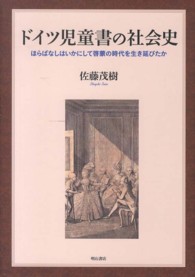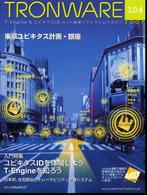Full Description
NoteEnhanced Pearson eText. To order the Enhanced Pearson eText packaged with a bound book, use ISBN 0134057295.50 Strategies for Teaching English Language Learners includes a rich assortment of practical strategies aligned to TESOL standards, which have been field-tested in diverse classrooms. Each strategy includes a brief explanation, step-by-step instructions on how to plan and use the strategy, and classroom scenarios demonstrating how the strategy can be adapted for different grade levels and content areas. The authors have included additional strategies in language and literacy development, technology, and assessment to support both pre-service and in-service teachers. The Fifth Edition represents a major change in standards-based education that helps educators meet the additional challenges of the Common Core State Standards in the process of acquiring English. Included are six new strategies, self-evaluation rubrics, adaptation charts, classroom examples demonstrating approaches to CCSS, video links, pop-ups encouraging further reading, and a glossary of terms encountered in the text. The Enhanced Pearson eText features embedded video.Improve mastery and retention with the Enhanced Pearson eText*The Enhanced Pearson eText provides a rich, interactive learning environment designed to improve student mastery of content. The Enhanced Pearson eText is:Engaging. The new interactive, multimedia learning features were developed by the authors and other subject-matter experts to deepen and enrich the learning experience. Convenient. Enjoy instant online access from your computer or download the Pearson eText App to read on or offline on your iPad (R) and Android (R) tablet.* Affordable. The Enhanced Pearson eText may be purchased stand-alone or with a loose-leaf version of the text for 40-65% less than a print bound book.*The Enhanced eText features are only available in the Pearson eText format. They are not available in third-party eTexts or downloads.*The Pearson eText App is available on Google Play and in the App Store. It requires Android OS 3.1-4, a 7" or 10" tablet, or iPad iOS 5.0 or later.
Contents
Preface Theoretical Overview Introduction to the Strategies1 Predictable Routines and Signals: Reducing Anxiety 2 Total Physical Response and Total Physical Response Storytelling (TPR and TPRS):Integrating Movement into Language Acquisition3 Modeled Talk: Demonstrating as You Talk4 Visual Scaffolding: Providing Language Support Through Visual Images5 Realia Strategies: Connecting Language Acquisition to the Real World6 Vocabulary Role Play: Building Word Knowledge through Dramatization7 Collecting and Processing Words: Making Vocabulary Your Own8 Manipulatives Strategies: Using Objects to Connect Concepts9 Read-Aloud Plus: Using Strategies to Support Comprehension10 Moving into Reading: Using Multiple Strategies to Foster Comprehension11 Close Reading: Engaging with Text to Improve Reading Comprehension12 Repeated Reading: Using Script Writing and Reader's Theatre13 Scaffolding English Writing: Matching Instruction to Language Development14 Reporting Back: Verbal Practice in Curriculum Connections15 Leveled Questions: Adjusting Questioning Strategies to the Language Levels of Students16 Bilingual Books and Labels: Supporting Biliteracy Awareness17 Sorting Activities: Organizing Information into Categories18 Cloze: Using Context to Create Meaning19 Verb Action: Teaching Irregular verbs through Experience 20 Syntax Surgery: Visually Manipulating English Grammar21 Checking for Understanding: Using Questioning Strategies to Differentiate Instruction22 Learning Centers: Extending Learning Through Hands-On Practice23 Communication Games: Creating Opportunities for Verbal Interaction24 Cognate Strategies: Using the Home Language to Support English Acquisition25 RTI for English Language learners: Documenting and Monitoring Student Progress and the Effectiveness of Intervention (RTI)26 Preview/Review: Building Vocabulary and Concepts to Support Understanding27 Story Reenactment: Making Stories Come to Life!28 Repetition and Innovation: Exploring a Book to Deepen Comprehension29 Language Focus Lessons: Support English Vocabulary and Structure Acquisition30 Graphic Organizers: Visually Representing Ideas, Text, and Connections31 Advance Organizers: Getting the Mind in Gear for Instruction32 Guided Reading: Providing Individual Support within a Group Setting33 Cohesion Links: Understanding the Glue That Holds Paragraphs Together34 Language Framework Planning: Supporting Academic Language and Content Acquisition35 Free Voluntary Reading: Nothing Helps Reading Like Reading36 Culture Studies: Learning Research Skills and Valuing Home Cultures in One Project37 Microselection: Finding Key Words and Main Ideas38 Read, Pair, Share: Working with a Partner to Negotiate Meaning39 Attribute Charting: Organizing Information to Support Understanding40 Integrated Curriculum Projects: Using Authentic Projects to Integrate Content Knowledge41 KWL and Data Charts: Researching and Organizing Information42 Collaborative Reading: What to Do When They Can't Read the Textbook43 Cooperative Learning: Group Interactions to Accomplish Goals44 Learning Strategy Instruction: Acquiring Self-Help Skills45 Multiple Intelligences Strategies: Teaching and Testing to Student-Preferred Learning Modes46 Multimedia Presentations: Oral Reports for the New Millennium47 Small Groups and Partners: Interactions to Enhance Instruction48 GIST: Exploring Tough Text49 Tutorials: Closing the Achievement Gap50 Combining and Scheduling Strategies: Supporting Learning through DifferentiationGlossaryTEACHER RESOURCESAn Informal Multiple Intelligences SurveyDevelopmental Profiles for Documenting English Language DevelopmentTESOL Standard Correlation Chart








